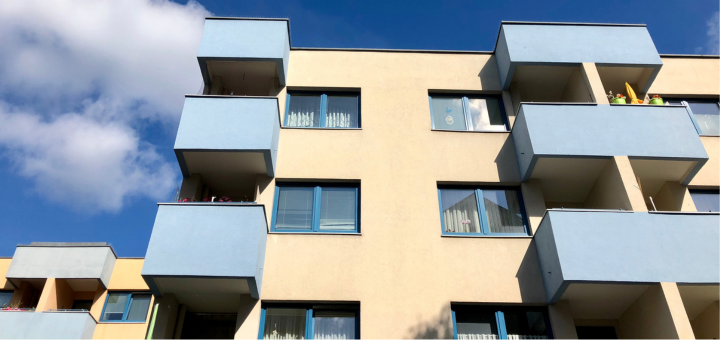The Living in Australia 2023 – Liveability Survey launch webinar (watch it HERE) highlighted findings from a large and nationally representative survey exploring Australians’ values, experiences, views on local area liveability and future needs. The data informing this session was collected in partnership with leading social research consultancy Ipsos Public Affairs and is principally used as spatial benchmarking for councils and other organisations who subscribe to our Living in Place community survey.
On the 14th of June 2023 several hundred local government professionals participated in the Living in Australia 2023 webinar where we highlighted key findings from the annual survey, collected across April and May 2023. The key insights we communicated were:
Overall Liveability varied considerably across the Nation…
Australia’s Overall Liveability was 62.6 out of a possible 100, consistent with 2022 (62.5). While Metropolitan Australians (64.0) reported higher local area liveability in comparison to Regional & Rural Australians (61.6), the Overall Liveability Indices changed considerably across the Survey’s 23 Regions. Metropolitan liveability ranged from 53.1 in Darwin through to 71.6 in Adelaide, whereas Regional & Rural liveability landed between 51.5 in Regional NT and 67.6 in Western Victoria.
These indices incorporate each community’s unique values (what the residents believe makes somewhere a good place to live) and local area experiences. To this end, they are entirely resident led and reflective of the community’s views at that point-in-time. And, while it is interesting to compare places using these indices, and to say that Place A is more liveable than Place B, that admirative use of the insights is actually not that helpful, nor instructive, given each Region has a relatively unique set of values, experiences and future needs.
In service of understanding what actually needs to happen to advance quality of life across Australia, the webinar identified three keys insights, discussed below.
1) Some Regions are falling behind in the fundamentals…
During the webinar we communicated that residents from Regions with below average Overall Liveability Indices reported very poor local area experiences for at least one of the following three fundamental liveability attributes:
- ‘Feeling safe’ was the most important attribute and 3rd most positively experienced overall. Given its high importance, local area experiences of ‘feeling safe‘ were very influential in determining a Region’s Overall Liveability. The National survey observed massive Region based variation for how safe people felt where the lived, with residents of Adelaide, The ACT and Western Victoria feeling considerably safer in comparison to those who make their home in Darwin, Regional NT and Far North Queensland.
- ‘High quality health services’ was the 4th most important liveability attribute and 10th most positively experienced. While Regional & Rural Australians placed greater value in this item in comparison to Metropolitan Australians, Metropolitan Australians actually reported considerably better local area experiences of health services. Beyond place, ‘high quality health services’ was very important for Australians aged greater than 60 years, irrespective of where they live.
- ‘Affordable decent housing’ was the 3rd most important liveability attribute overall and 16th most positively experienced. This combination of very high value and very poor local area experiences determines that the provision ‘affordable decent housing’ represents the single biggest inhibitor to advancing quality of life across Australia which, by extension, determines it also represents our Nation’s greatest opportunity. Perhaps unsurprisingly, Australians aged between 18 & 34 years and Renters placed more stock in and reported poorer experiences of ‘affordable decent housing’ in comparison to the balance of Australians.
2) Transport infrastructure investment is critical to advancing liveability across Metropolitan Australia…
Three of the 16 attributes we deploy in the Living in Place community survey speak to transport infrastructure investment and service delivery. These are the provision of ‘reliable and efficient public transport’, ‘a lack of road congestion’ and how the community feels about their ability to ‘make their way to and from services such as education, employment and healthcare with relative ease’.
While Living in Australia told us that investment in transport infrastructure and public transport services is critical to advancing quality of life across Metropolitan Australia, it also told us that the need is more acute for those who make their home in Middle Suburban, Outer Suburban and fast growing urban fringe / peri-urban areas. Specifically:
- While ‘reliable and efficient public transport’ was nominated as the 3rd most important liveability attribute and 10th most positively experienced for all Metropolitan Australians, Inner City residents placed more stock in and reported more positive local area experiences for this item in comparison to those who make their home in Middle Suburban and Outer Suburban areas, where local area experiences were relatively poor.
- ‘Making your way to and from services such as education, employment and healthcare with relative ease’ was the 6th most important liveability attribute and 8th most positively experienced for all Metropolitan Australians. Again, like public transport, Inner City residents placed more value in and reported better local area experiences for this item in comparison to Middle Suburban and Outer Suburban residents.
- ‘A lack of road congestion’ was the 11th most important liveability attribute and 15th most positively experienced across Metropolitan Australia. This item was nominated as being of very low importance for Inner City residents, so their relatively poor experiences were not really that influential in informing the Inner City’s overall liveability. In contrast, ‘a lack of road congestion’ was of greater importance for Outer Suburban residents, and greater importance again for people who live in postcodes that have experienced significant population growth over the past decade. Given these residents place more value in this attribute, future improvements or contractions in local area experiences of road congestion will be very influential in informing how residents in growth areas feel about their quality of life overall.
3) It’s not easy being young…
Younger Australians, those aged between 18 & 34, reported significantly lower levels of local area liveability across Australia – irrespective of where they live. To understand this in numbers, local area liveability for 18-34 YOs was 60.9 out of a possible 100, lower than the 35-59 YO cohort (62.3) and lower again in comparison to those aged 60+ (65.4).
While poorer levels of local area liveability for younger people were principally informed by the higher value they placed on ‘affordable decent housing’ and their significantly worse local area experiences of housing where they live, this group also placed more stock in ‘making your way to and from services such as employment, education and healthcare with relative ease’ and ‘good job prospects’.
Beyond liveability, 18-34 YOs also reported poorer levels of mental health (6.8 out of 10), social wellbeing (6.6) and personal financial circumstances (5.7) in comparison to older Australians. However, despite this, the webinar also communicated that these younger Australians were more likely to be optimistic than pessimistic about their near-term health, wellbeing and financial prospects.
How to access more information
Watch the webinar in full HERE and access all the insights, data and resources related to Living in Australia on the views.id reporting and exploratory platform HERE. Webinar slides are available for viewing HERE.
If you’d like to learn more about how Living in Place can help bring your residents’ voices to Council’s most important decisions, this brochure provides a simple overview, answers frequently asked questions and includes links to other helpful information. Visit views.id to see which Councils subscribe to Living in Place and if you’d like to have a chat about Living in Place in your local context, feel free to book a meeting at a time that works for you here.









